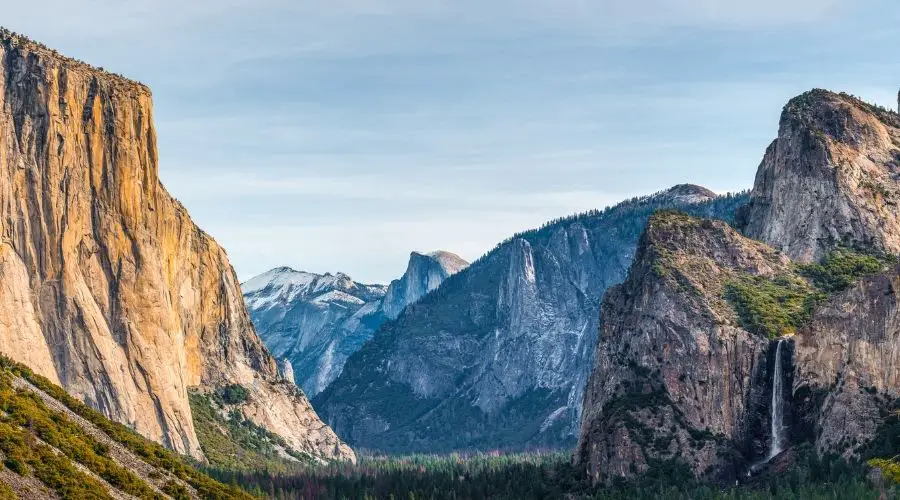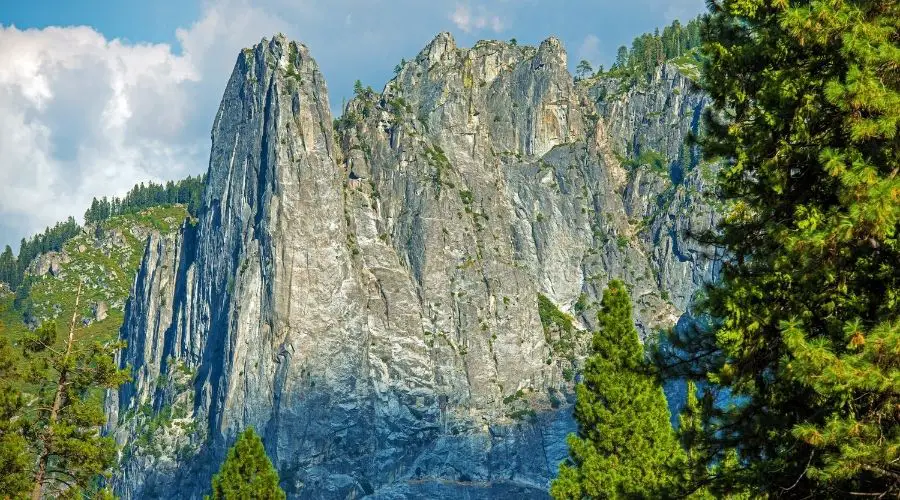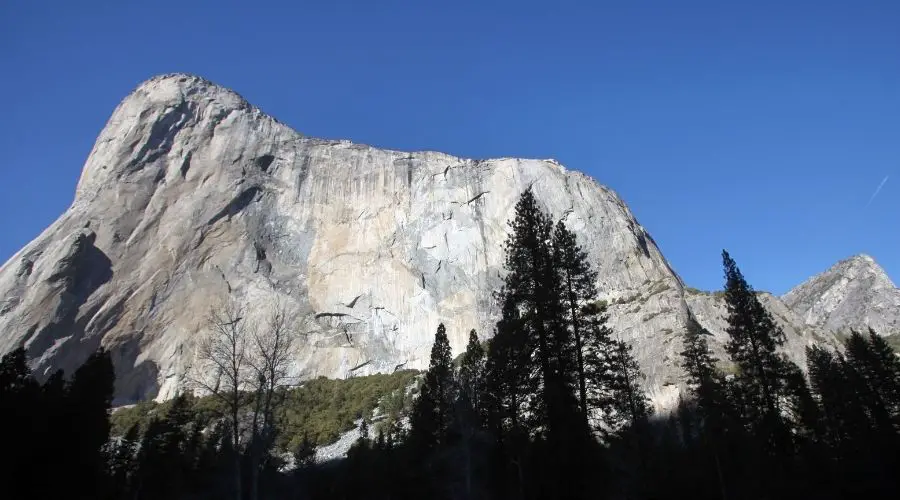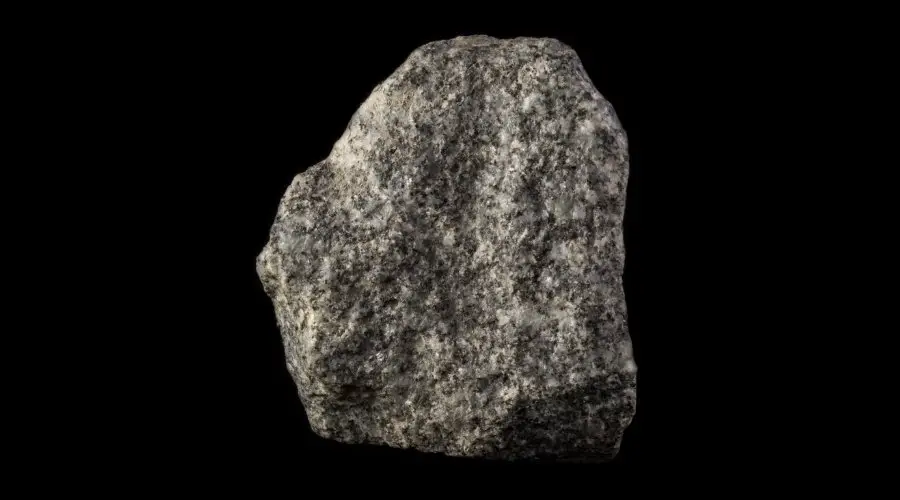If you are familiar with rock climbing at all, you have probably heard of Alex Honnold’s free solo ascents of the massive granite walls in Yosemite Valley. Granite provides climbers with some of the best rock climbing experiences in the entire world. As a geologist, I got quite interested in how granite’s characteristics translate into the world of climbing. Here is what I found out:
As a general rule, fresh granite is great for rock climbing. Granite formations are typically massive and provide climbers with excellent slabs and crack networks. Although granite is resistant to weathering, it is not weather proof and can become soft and crumbly making it dangerous to climb on if it is too weathered.
While fresh granite can be some of the best rock in the world to climb on, it can also be sharp and wear out climber’s hands pretty quickly. In addition to this, if the granite rock becomes too weathered, then it will start to erode and become very dangerous to climb on. This article outlines what makes granite so great for climbing and lists of some of the best spots for granite rock climbing at the end!
If you are a big geology nerd like myself and want to learn more how all rock types affect climbing, I recommend checking out this book on Amazon!
How Good is Granite For Rock Climbing

Granite is the most commonly climbed rock in the United States for good reason. Its formation environment and composition lend itself to be a great rock for climbing.
Granite is an intrusive igneous rock of felsic composition. In non-geologist terms, granite is typically a light gray to pink rock formed by the slow cooling of volcanic magma under the Earth’s continental crust. This formation environment causes granite to be coarse grained with a high silica content.
If you are looking to briefly refresh your granite geology knowledge or are just genuinely interested in learning more about the actual science behind granite, I recommend checking out this information on GeologyScience.com. If you are wondering if there is a best rock for climbing, check out my article here.
Due to the slow cooling nature of granite’s formation environment under the earth’s crust, granite formations tend to be massive (think of just the sheer size of Yosemite Valley). These massive formations are quite appealing for big wall and multi-pitch trad climbers alike. (Rhyolite is similar to granite as it is a felsic igneous rock but instead of cooling slowly, it cooled more quickly at the Earth’s surface. This different cooling environment leads to different rock characteristics. Check out more about climbing on rhyolite here).
Granite’s high silica composition, solid crystalline structure, and near lack of cleavage makes it very durable, hard, compact, and strong. This is ideal for placing bolts and other protection into the rock. In addition to this, its strength provides great holds that climbers can be confident on. This needs to be taken with a grain of salt however as weathered granite does not afford climbers this safety.
On the down side, granite tends to have razor sharp edges that can cut open climbers’ hands if they are not careful. In addition to sharp edges, some granite can be smooth and slippery making it hard to keep a solid grip on it. That said, other granites have quite nice texturing to them and provide climbers with excellent grip.
Some granite is absolutely fantastic while other granite can be a nightmare. On average, granite’s texture is typically very good for rock climbing.
Typical Granite Climbing Features
There are two very common climbing styles associated with granite formations: crack climbing and slab climbing. Most large granite routes will require crack and slab climbing techniques to reach the top. This leads to a very unique climbing experience that puts climbers’ footwork and body positioning to the test.
Climbing Granite Crack Systems

Granite is probably the most well known for the incredible crack climbing experience it provides climbers with. The rock tends to erode the most along vertical joints which in turn create all sizes of cracks ranging from finger cracks to off-widths. While crack climbing isn’t exclusive to this rock type, granite really is the cream of the crop when it comes to crack climbing.
If you are wondering what the main differences are between crack climbing and face climbing regarding technique, physical demands and gear I recommend you check out my article here. Or if you are already a crack climbing wiz and are looking to do some more granite crack climbing, check out my list of the best gear for crack climbing.
Climbing Granite Slab Formations

In addition to wonderful crack climbing, granite is able to provide climbers with pristine slabs to scale. Granite typically outcrops as large sub-vertical to vertical slabs because it is so hard and tends to weather vertically by rain, wind, etc. Like with crack climbing above, slab climbing is not exclusive to just granite but the rock provides some of the best slab climbing in the world.
Unlike some other types of climbing, slab climbing does not rely heavily on overall strength but instead really forces climbers to maintain great body positioning and use precise footwork to stay on the rock. Granite’s coarse grains tend to provide climbers with the small amount of friction they need to scale the slabs.
This is contrasted with overhanging routes which require a lot of body tensions and power to climb. Overhanging routes are more associated with limestone climbs.
The Effects of Weather Conditions and Weathering on Granite Climbing
Weather conditions such as rain and snow have both short and long term effects on rocks.
How Weather Conditions Affect Climbing on Granite

As a felsic intrusive igneous rock, granite has large well formed crystals arranged in a crystalline structure. Not only does this make granite hard and sturdy for climbing, but it also makes granite have a very low porosity (amount of “empty space” in the rock). This low porosity means that granite does not readily absorb large amounts of water and will be able to dry out quicker than other rocks with higher porosity i.e. sandstone.
As a general rule, you should not climb on wet rock as any moisture absorbed into the rock can weaken it and cause a previously good hold to break. Due to its crystalline structure and low porosity, granite typically does not absorb a lot of moisture and can be completely dried out within an hour of hot, dry, and sunny conditions.
This is in stark contrast to sandstone which is very porous and takes a long time to dry out. To learn more about climbing on sandstone, check out my article here.
How Long Term Weathering Affects Climbing on Granite
Granite is a felsic rock which indicates it has a high silica content. Silica rich rocks such as granite are resistant to chemical weathering processes caused by the elements such as rain. For example, extended exposure to water will lead to oxidation of iron rich minerals in mafic rocks (such as basalt) which in-turn weaken the rock’s integrity.
Coupling granite’s chemical weathering resistance with its hardness, solid crystalline structure, and low porosity make granite one of the most durable rocks on Earth.
That said, granite is not “weatherproof” by any means and will slowly (or quickly depending on the situation) deteriorate over time. As granite weathers, it will become more brittle and can even start to crumble into gravel and sand. Even moderately weathered granite can break apart when climbed on.
As you may have guessed, climbing and placing protection on weathered granite is extremely dangerous. DO NOT DO THIS. Only climb on granite that you know is fresh and solid. It is not worth taking the risk.
Best Places to Climb On Granite
As granite is formed deep underground, the majority of granitic rocks are buried and do not outcrop at Earth’s surface. That being said, there are a multitude of locations that provide climbers with specific fantastic granitic outcrops great for climbing.
9 of the Best Spots For Granite Rock Climbing
- El Capitan, California
- Half Dome, California
- The Incredible Hulk, California
- The Needles, California
- Index, Washington State
- Looking Glass Rock, North Carolina
- Cathedral Ledge, New Hampshire
- Cannon Cliff, New Hampshire
- Mount Rushmore, South Dakota
Every single one of these spots above provide climbers with fantastic granite rock climbing experiences.
Disclaimer: Rock climbing is a dangerous sport which has the potential to result in serious injury or death. This article was written solely to provide information and insight pertaining to the relationship between geology and rock climbing. The information in this article is not to be relied on for guidance pertaining to the health and safety of any rock climbing activities.
